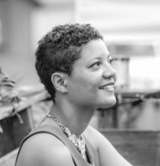Summary
Designing with rigid assumptions often means creating for a narrow set of “typical” users—people who look and think like us. But this mindset risks excluding real, diverse needs, especially those of people with disabilities, one of the fastest-growing population segments. In this talk, you’ll explore the hidden costs of designing systems for templated personas and learn why flexible, inclusive approaches are essential.
Key Insights
-
•
Disability affects one in five people, not a rare subset.
-
•
The medical model of disability stigmatizes individuals by labeling them as broken.
-
•
Designing for an average user is flawed because the average person does not exist.
-
•
Disability is a spectrum that includes permanent, temporary, and situational conditions.
-
•
Assistive technologies like captions have evolved to benefit broad audiences beyond initial users.
-
•
The aging population is increasing the demand for accessible products as disability becomes more common with age.
-
•
Temporary disabilities impact users who still need to engage with products and services effectively.
-
•
Involving people with disabilities as coworkers and co-designers improves identification and elimination of accessibility barriers.
-
•
QA testing with screen readers is valuable, but user research should be conducted by actual assistive technology users.
-
•
Designing for accessibility benefits all users and future-proofs products against diverse user needs.
Notable Quotes
"The average user doesn’t exist."
"People with disabilities are not one in a thousand, or one in a hundred, they are one in five."
"Disability is not a binary, it’s a spectrum."
"We tend to design for people just like us, which is limiting."
"Temporary disability is real and products should support people when they experience it."
"Captions were once an assistive technology for a tiny subset but are now widely used."
"Failing to design for disabilities means failing to design for our future selves."
"Accessibility isn’t just for developers or designers—everyone has a role to play."
"We cannot remove barriers we aren’t aware of."
"Testing with a screen reader is fine for QA, but user research must be with actual screen reader users."
Or choose a question:















More Videos

"There’s no faking it with this crowd."
Doug PowellClosing Keynote: Design at Scale
November 8, 2018

"Power dynamics exist in every session. People don’t want to be embarrassed or feel put on the spot."
Mila Kuznetsova Lucy DentonHow Lessons Learned from Our Youngest Users Can Help Us Evolve our Practices
March 9, 2022

"The mayor wanted to shrink the neighborly bonds that the city was known for by investing in a 2030 living Monument of collaboration and community."
Sarah GallimoreInspire Progress with Artifacts from the Future
November 18, 2022

"You can’t really advocate for UX or move an organization forward without interacting with your team and business colleagues."
Lada Gorlenko Sharbani Dhar Sébastien Malo Rob Mitzel Ivana Ng Michal Anne RogondinoTheme 1: Discussion
January 8, 2024

"Who deals with chaos, ambiguity, and disruption best? It’s us, design operations humans."
Alnie FigueroaThe Future of Design Operations: Transforming Our Craft
September 10, 2025

"Every board member can interpret an NPS score differently depending on their role and responsibilities."
Landon BarnesAre My Research Findings Actually Meaningful?
March 10, 2022

"I felt like a journalist pretending to be a designer."
Emily EagleCan't Rewind: Radio and Retail
June 3, 2019

"Keep a pulse on your team morale because re-platforming journeys can either enrich or burn out your people."
Malini RaoLessons Learned from a 4-year Product Re-platforming Journey
June 9, 2021

"Project management was focused on outputs, assuming the correct feature was already defined."
Asia HoePartnering with Product: A Journey from Junior to Senior Design
November 29, 2023
















